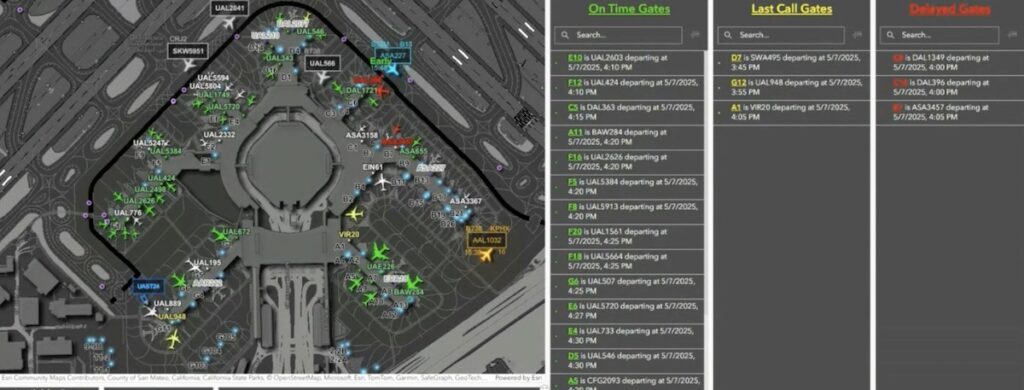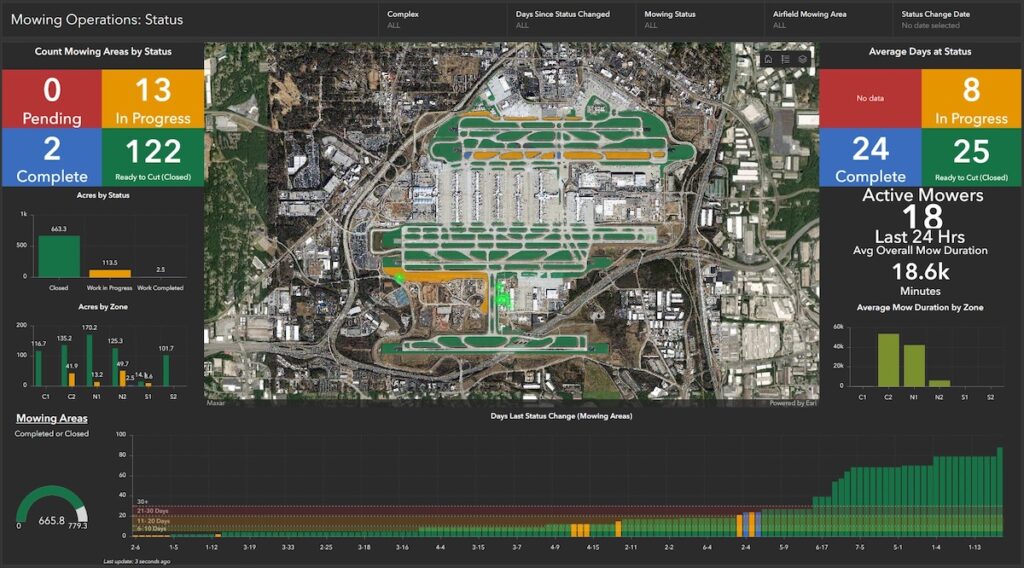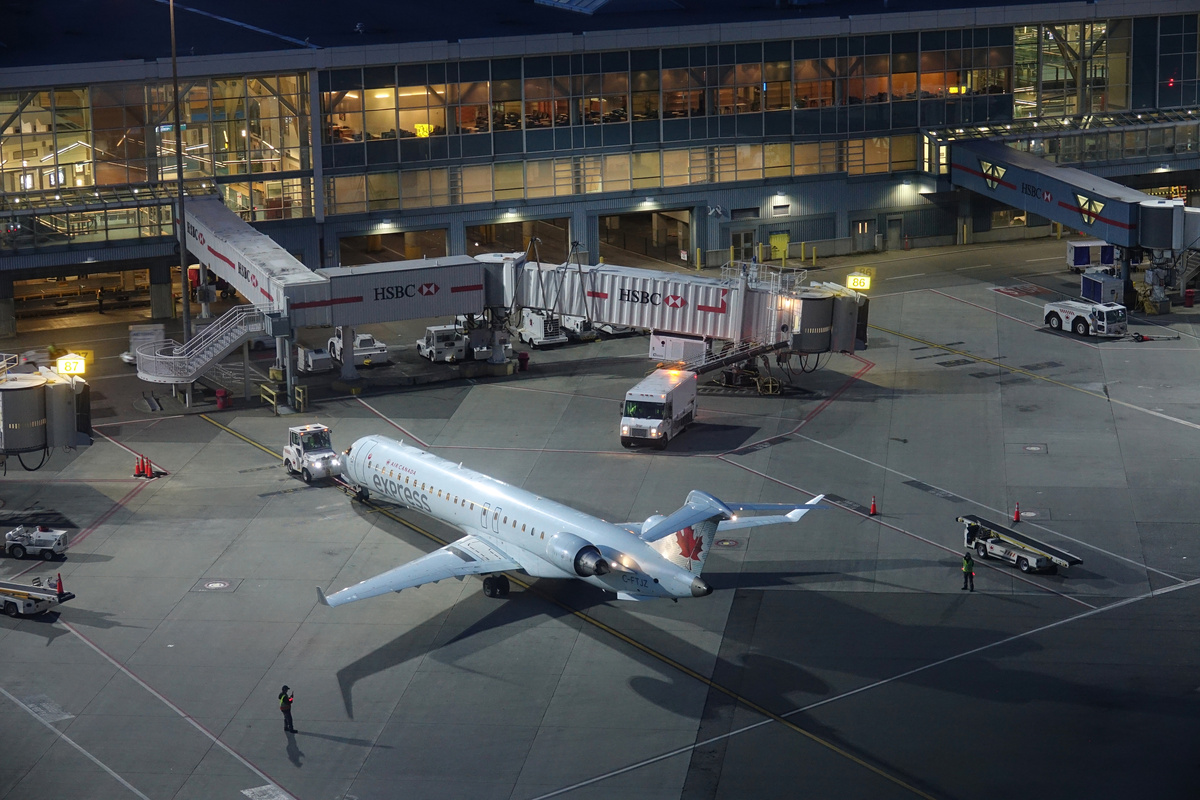Safe Software’s Airports & Aviation Special Interest Group (SIG) held its first virtual meetup, and it was packed with innovation, inspiration, and real-world problem-solving. The goals of the SIG are to connect professionals in the aviation industry, foster collaboration, and share technical insights in a more informal setting than traditional conferences. Here’s a recap of the highlights from the event.
Top 3 takeaways:
- FME is the backbone of digital twin systems at major airports, enabling powerful infrastructure management.
- Live data integrations are transforming airport operations with real-time visibility and faster decision-making.
- Automated FME workflows are replacing manual processes, increasing efficiency and reliability across airport systems.
User story #1: Building a digital twin at SFO
Aric Lang, GIS Analyst at San Francisco International Airport (SFO), shared an engaging deep dive into the development of SFO’s Operational Digital Twin.
SFO’s GIS includes:
-
400+ miles of subsurface utilities mapped
-
361 structures, including over 18 million sq. ft. of interior space
-
200 miles of airfield paint markings and 11,000+ airfield lights
-
Highly detailed modeling using CAD, BIM, LIDAR, and even smartphone photos
Aric outlined a meticulous data intake and QA/QC process powered by FME, enabling his small team to handle vast, complex data flows with confidence. They use FME at every stage, from standardizing BIM/CAD deliverables to automating production deployments across SFO’s enterprise systems.
SFO has built a suite of web apps for its new Airport Integrated Operations Center (AIOC):
-
Aircraft Turnaround App: Live gate occupancy, flight statuses, and gate activity.
-
Landside Experience App: Parking occupancy, real-time traffic, and transit updates.
-
Terminal Activity Map: Security queue lengths, baggage carousel activity, and more.

They’ve also integrated various data streams, like therapy dog locations via the Wag Brigade, alongside essentials like FlightAware, Xovis (checkpoint monitoring), and SITA AMS (flight info).
Future integration plans include:
-
AirTrain and public transit locations
-
Escalator/elevator status
-
Indoor air quality and environmental sensors
-
FAA SWIM data for automated airfield configurations
This talk highlighted how SFO uses FME to power an airport-wide digital twin, and how it’s transforming operations from the control room to the concourse.
User story #2: Scaling enterprise workflows at Atlanta Airport
Andrew Baumgartner, Senior Solution Architect at NV5, shared how his team supports Atlanta Hartsfield-Jackson International Airport (the world’s busiest airport) through enterprise FME integrations.
Before adopting FME, Atlanta’s integrations relied on hardcoded scripts and manual processes, which were difficult to scale and maintain. Transitioning to FME Flow transformed how the airport integrates GIS, asset management, and real-time operations.
Some of their FME workflows include:
-
CityWorks integration for real-time work order creation and updates
-
Samsara vehicle data processing for automated mowing zone tracking
-
Room and door numbering automation
-
Inspection workflows, including data compliance
-
Notifications for violations and alerts
Andrew demoed a workflow in which GPS data from tractors and mowers is streamed through FME to update CityWorks work orders automatically, complete with area coverage calculations and visual dashboards.

The results:
-
49 production workspaces and 20 automations in FME Flow
-
Time-to-delivery reduced from months to days
-
CityWorks usage has expanded across the airport and inspired broader city-wide adoption
Technical update: FME enhancements for aviation users
To wrap up, we shared key FME product updates relevant to aviation users:
-
Rewritten AIXM Reader: Simpler workflows for working with FAA-compliant airspace data
-
New IFC Reader/Writer: Easier BIM integration with improved property set handling and geometry support
-
Enhanced performance and user experience when working with complex infrastructure models
Join the Airports & Aviation SIG
Our Airports & Aviation SIG plans to meet 2–3 times per year, with more presentations, demos, and community-driven content. We invite you to join the private community group to collaborate, get inspired, and learn from industry-specific resources.
Join the FME Airports & Aviation SIG
Learn more about the Local Government SIG and Utilities & Energy SIG.




